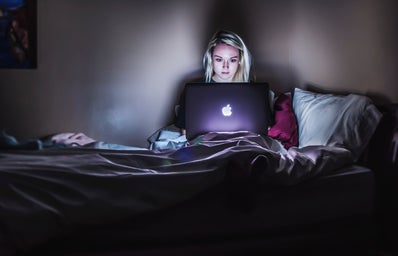People have been creating and using porn since the creation of cave paintings. Yet the proliferation of the internet has meant that multi-million dollar industries, such as PornHub and OnlyFans, have made porn accessible to anyone with an internet connection. Whilst porn can have positive impacts, creating a space to relax and explore sexual pleasure, the porn industry has had many negative impacts on our perceptions of body image, relationships, and women as a whole.
Unrealistic Expectations of Sex
The media is meant to be an extension of reality, that is what makes it so entertaining. However, the range of representations and what has been portrayed in the media influences our perceptions of real life, which for those who watch porn, includes their ideas of sex. With over half of young people watching porn for the first time at the ages of 11-13, porn has become many people’s first introduction to sex. With an unsatisfactory sex education curriculum that treats sex as taboo, porn can easily become the main representation of sex that young people are exposed to.
Porn is often very exaggerated, with the amount of pleasure (especially on the women’s side) being far more extreme than the reality of sex, leading to dissatisfaction and false expectations. Limited representations of penises and vulvas can also create insecurities about body image if people feel their bodies don’t match what is seen on screen. This dissonance between what is displayed in porn versus reality makes sex an uncomfortable and confusing place, rather than a safe space to learn about what you and your partner like.
Objectification of Women
In recent years, there have been attempts to rebrand porn as a pro-feminist concept, through the idea that watching porn can sexually liberate women. By being consumers of porn, women can explore their sexuality and learn about sex in a way that has been previously denied to them. Whilst this sounds great in theory, the reality is that a lot of mainstream porn is directed and filmed through the male gaze, focusing on how women can create male pleasure. Rather than sexually liberating women, it can lead to them being seen as objects of male enjoyment, creating unrealistic expectations for women to adhere to, in how they should look and act during sex.
The porn industry ultimately sells a fantasy of sex, and fantasy of women, but this, in turn, dehumanises real women. When 41% of young people felt that pornography could make viewers less respectful to the opposite sex, porn’s lack of representation of female pleasure and women as agentic beings can both lower women’s confidence in the bedroom and the importance of enjoyment for all people involved. This issue is not inherent to porn itself, but rather is being used as a tool of the patriarchy. It is reflecting issues that are already present in how women are perceived, but by the male gaze being the mainstream way of viewing women in porn, it spreads these values and exacerbates them. Especially if porn is being used as a guide to how sex should be.
Unsafe representations
If porn is being used as a resource to learn about sex, then it is particularly concerning when extreme and violent representations of sex are so easily accessible. When one in every eight titles on the front pages of popular porn sites depict violence towards women in some form, it is problematic that this is being normalised and perceived as what is expected during sex. Whilst the practice of BDSM is between consenting adults with agreed-upon boundaries, this is not everyone’s cup of tea and mainstream porn risks presenting aggressive sex as the norm and without these safeguards. Furthermore, ‘non-consent’ is a category that exists on PornHub, which could reflect the damaging idea that consent is optional and has the real-world consequences of perpetuating r*pe culture. Once again, the limited representations of sex in mainstream porn normalise hardcore practices and lack of healthy boundaries during sex.
All these impacts are deeply concerning and must be overcome if we are to push our society forward to having healthy sex and relationships. However, nuance is needed. Porn is not inherently bad, it’s the misogynistic values of our society that it reflects. It has the potential to do a lot of good, by allowing people to explore their sexuality within their own private spaces, to find things that they might want to try and to relax and feel good about themselves. This has been something that has been explored in sites such as Bellesa, in which feminist porn is written by women and minority genders and focused on female pleasure. Additionally, the actresses are diverse both in race and size, plus, they are properly paid.
These are important changes to be made within the porn industry itself, if there is greater diversity in representations of sex and greater respect within it, porn can perpetuate healthier sex in reality.
However, creating a cultural shift in these values is not wholly the responsibility of the porn industry. These changes need to be coupled with better sex education in schools and beyond, as treating sex as a taboo topic is a factor in causing people to learn from porn rather than see it as the fantasy it is.
Open discussion about what healthy sex looks like means that young people will be exposed to other sources of information about sex other than porn. This will mean that there will be more representations and people will be better informed about how to navigate sex. Additionally, people should be taught about using porn safely, and the importance of distinguishing its performances from reality.


